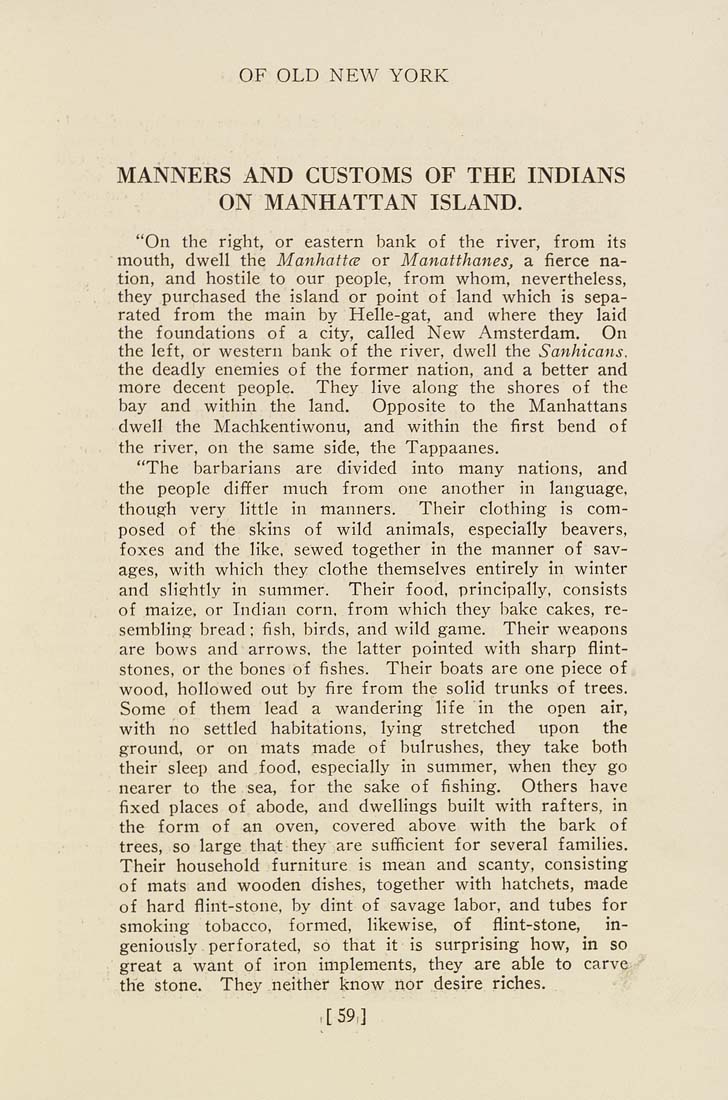OF OLD NEW YORK
IMANNERS AND CUSTOMS OF THE INDIANS
ON MANHATTAN ISLAND.
"On the right, or eastern bank of the river, from its
mouth, dwell the Manhattæ or Manatthanes, a fierce na-
tion, and hostile to our people, from whom, nevertheless,
they purchased the island or point of land which is sepa-
rated from the main by Helle-gat, and where they laid
the foundations of a city, called New Amsterdam. On
the left, or western bank of the river, dwell the Sanhicans.
the deadly enemies of the former nation, and a better and
more decent people. They live along the shores of the
bay and within the land. Opposite to the Manhattans
dwell the Machkentiwonu, and within the first bend of
the river, on the same side, the Tappaanes.
"The barbarians are divided into many nations, and
the people difí^er much from one another in language,
though very little in manners. Their clothing is com-
posed of the skins of wild animals, especially beavers,
foxes and the like, sewed together in the manner of sav-
ages, with which they clothe themselves entirely in winter
and slightly in summer. Their food, prĩncipally, consists
of maize, or Indian corn, from which they bake cakes, re-
sembling bread; fish, birds, and wild game. Their weapons
are bows and arrows, the latter pointed with sharp flint-
stones, or the bones of fishes. Their boats are one piece of
wood, hollowed out by fire from the solid trunks of trees.
Some of them lead a wandering life in the open air,
with no settled habitations, lying stretched upon the
ground, or on mats made of bulrushes, they take both
their sleep and food, especially in summer, when thcy go
nearer to the sea, for the sake of fishing. Others have
fixed places of abode, and dwellings built with rafters, in
the form of an oven, covered above with the bark of
trees, so large that they are sufficient for several families.
Their household furniture is mean and scanty, consisting
of mats and wooden dishes, together with hatchets, made
of hard flint-stone, by dint of savage labor, and tubes for
smoking tobacco, formed, likewise, of flint-stone, in-
geniously perforated, so that it is surprising how, in so
great a want of iron implements, they are able to carve
the stone. They neither know nor desire riches.
i[S9,]
|








